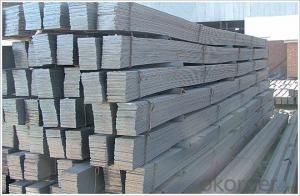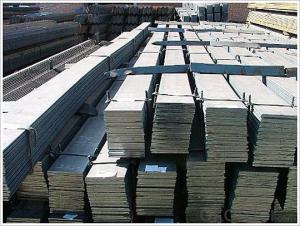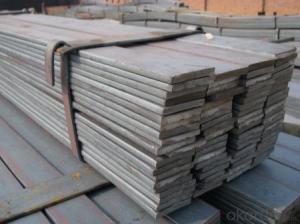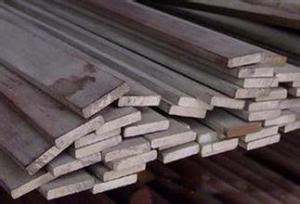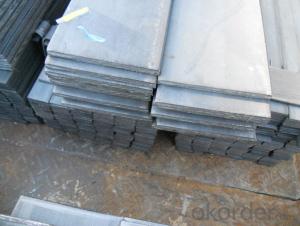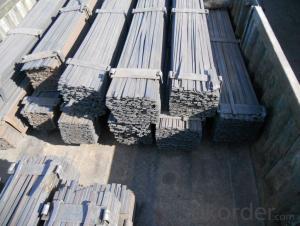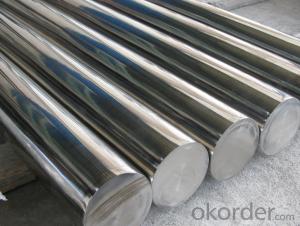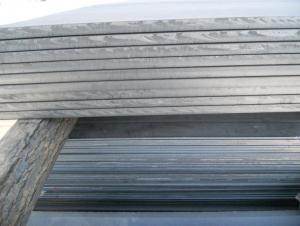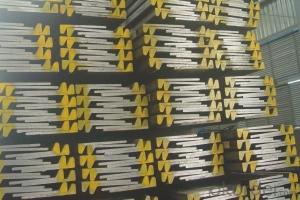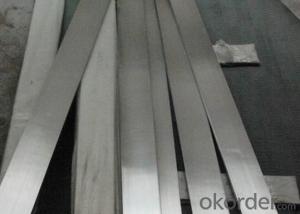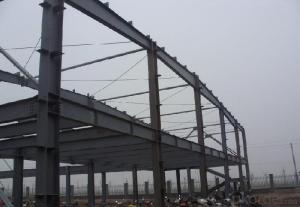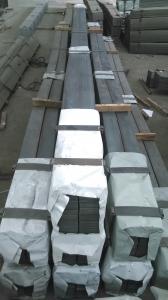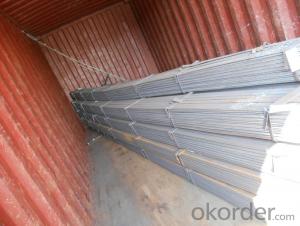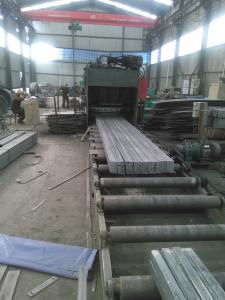Bulb Flat Steel for Ship and Bridge Building
- Loading Port:
- Tianjin
- Payment Terms:
- TT OR LC
- Min Order Qty:
- 25 m.t.
- Supply Capability:
- 20000 m.t./month
OKorder Service Pledge
Quality Product, Order Online Tracking, Timely Delivery
OKorder Financial Service
Credit Rating, Credit Services, Credit Purchasing
You Might Also Like
Specifications
Bulb Flat Steel for Ship and Bridge Building
1.certificate: LR DNV RINA GL BV NK KR ABS CCS
2.factory
3.80*5~340*14mm
Bulb Flat Steel for Ship and Bridge Building
Specification: 80x5mm~430x20mm (HP80-HP430)
Grade: A, A32, A36
Bulb Flat steel for shipbuilding
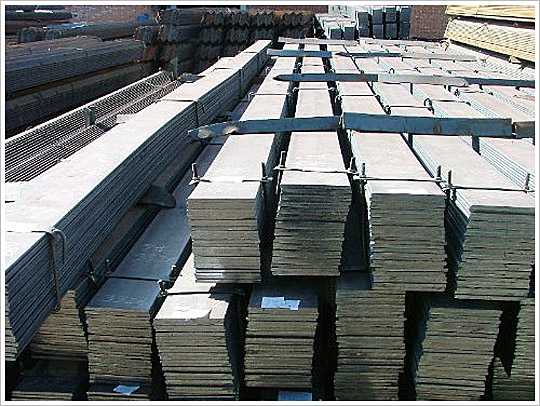
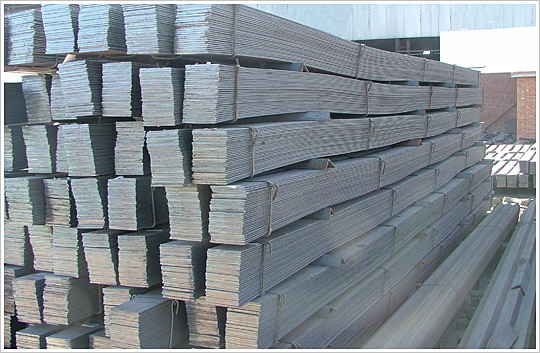
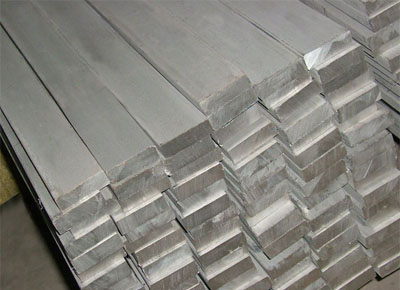
11:48:45
| Model | Dimensional | Section Area | Theoretical Weight | Grade | ||||
| b | t | h | r1 | r | cm2 | kg/m | ||
| HP80X5 | 80 | 5 | 19 | 4 | ≤1.5 | 5.41 | 4.25 | A A32 A36 |
| HP80X6 | 80 | 6 | 20 | 4 | ≤2 | 6.21 | 4.88 | |
| HP100X7 | 100 | 7 | 22.5 | 4.5 | 8.74 | 6.86 | ||
| HP100X8 | 100 | 8 | 23.5 | 4.5 | 9.74 | 7.65 | ||
| HP120X6 | 120 | 6 | 23 | 5 | 9.32 | 7.32 | ||
| HP120X7 | 120 | 7 | 24 | 5 | 10.52 | 8.26 | ||
| HP120X8 | 120 | 8 | 25 | 5 | 11.72 | 9.2 | ||
| HP140X7 | 140 | 7 | 26 | 5.5 | 12.43 | 9.75 | ||
| HP140X8 | 140 | 8 | 27 | 5.5 | 13.83 | 10.85 | ||
| HP140X10 | 140 | 10 | 29 | 5.5 | ≤3 | 16.63 | 13.05 | |
| HP160X7 | 160 | 7 | 29 | 6 | ≤2 | 14.6 | 11.46 | |
| HP160X8 | 160 | 8 | 30 | 6 | 16.2 | 12.27 | ||
| HP160X9 | 160 | 9 | 31 | 6 | 17.8 | 13.97 | ||
| HP160X11 | 160 | 11 | 33 | 6 | ≤3 | 21 | 16.49 | |
| HP180X8 | 180 | 8 | 33 | 7 | ≤2 | 18.86 | 14.8 | |
| HP180X9 | 180 | 9 | 34 | 7 | 20.66 | 16.22 | ||
| HP180X10 | 180 | 10 | 35 | 7 | ≤3 | 22.46 | 17.63 | |
| HP180X11 | 180 | 11 | 36 | 7 | 24.26 | 19.04 | ||
| HP200X9 | 200 | 9 | 37 | 8 | ≤2 | 23.06 | 18.57 | |
| HP200X10 | 200 | 10 | 38 | 8 | ≤3 | 25.66 | 20.14 | |
| HP200X11 | 200 | 11 | 39 | 8 | 27.66 | 21.71 | ||
| HP200X12 | 200 | 12 | 40 | 8 | 29.66 | 23.28 | ||
| HP220X10 | 220 | 10 | 41 | 9 | 29 | 22.77 | ||
| HP220X11 | 220 | 11 | 42 | 9 | 31.2 | 24.5 | ||
| HP220X12 | 220 | 12 | 43 | 9 | 33.4 | 26.22 | ||
| HP240X10 | 240 | 10 | 44 | 10 | 32.49 | 25.5 | ||
| HP240X11 | 240 | 11 | 45 | 10 | 34.89 | 27.39 | ||
| HP240X12 | 240 | 12 | 46 | 10 | 37.29 | 29.27 | ||
| HP260X10 | 260 | 10 | 47 | 11 | 36.11 | 28.35 | ||
| HP260X11 | 260 | 11 | 48 | 11 | 38.71 | 30.39 | ||
| HP260X12 | 260 | 12 | 49 | 11 | 41.31 | 32.43 | ||
| HP280X11 | 280 | 11 | 51 | 12 | 42.68 | 33.5 | ||
| HP280X12 | 280 | 12 | 52 | 12 | 45.48 | 35.7 | ||
| HP280X13 | 280 | 13 | 53 | 12 | 48.28 | 37.9 | ||
| HP300X11 | 300 | 11 | 54 | 13 | 46.78 | 36.7 | ||
| HP300X12 | 300 | 12 | 55 | 13 | 49.79 | 39.09 | ||
| HP300X13 | 300 | 13 | 56 | 13 | 52.79 | 41.44 | ||
| HP320X12 | 320 | 12 | 58 | 14 | 54.25 | 42.6 | ||
| HP320X13 | 320 | 13 | 59 | 14 | 57.25 | 45.09 | ||
| HP320X14 | 320 | 14 | 60 | 14 | 60.85 | 47.6 | ||
| HP340X12 | 340 | 12 | 61 | 15 | ≤3 | 58.84 | 46.2 | |
| HP340X13 | 340 | 13 | 62 | 15 | 62.24 | 48.86 | ||
| HP340X14 | 340 | 14 | 63 | 15 | ≤4 | 65.54 | 51.5 | |
- Q: Are there any safety considerations when working with steel flat bars?
- Yes, there are several safety considerations when working with steel flat bars. Firstly, steel flat bars can be heavy, so it is important to use proper lifting techniques and equipment to prevent back injuries. Additionally, steel bars may have sharp edges or corners that can cause cuts or punctures, so wearing appropriate personal protective equipment, such as gloves and safety glasses, is essential. When cutting or shaping steel flat bars, sparks and metal fragments can be produced, so it is crucial to work in a well-ventilated area and use eye and respiratory protection. Finally, when using power tools or welding equipment, it is important to follow proper safety protocols and receive proper training to minimize the risk of accidents or injuries.
- Q: Can steel flat bars be used in fire-resistant structures?
- Yes, steel flat bars can be used in fire-resistant structures. Steel is inherently a fire-resistant material due to its high melting point and low thermal conductivity. In addition to that, steel flat bars are often used in construction for their strength, durability, and versatility. They can be incorporated into fire-resistant structures such as fire-resistant walls, doors, and frames. Steel flat bars can also be used as structural supports and reinforcements in fire-resistant buildings. However, it is important to note that fire-resistant structures require careful design and construction, including the use of appropriate fire-resistant coatings or insulation materials to enhance the overall fire resistance of the building.
- Q: Can steel flat bars be used for making brackets or supports for lighting fixtures?
- Yes, steel flat bars can be used for making brackets or supports for lighting fixtures. Steel flat bars are strong and durable, making them suitable for providing structural support and stability to lighting fixtures. Additionally, steel's high load-bearing capacity ensures that the brackets can effectively hold the weight of the lighting fixtures.
- Q: Can steel flat bars be used for load-bearing applications?
- Yes, steel flat bars can be used for load-bearing applications. Steel is known for its high strength and durability, making it suitable for supporting heavy loads. Flat bars provide a stable and solid base for load-bearing structures, such as beams, frames, and trusses, ensuring stability and structural integrity.
- Q: Are steel flat bars commonly used in the manufacturing industry?
- Yes, steel flat bars are commonly used in the manufacturing industry. They are versatile and widely used for various applications such as construction, fabrication, and machinery. Steel flat bars are known for their strength, durability, and cost-effectiveness, making them a popular choice for manufacturers. They can be easily shaped, cut, and welded, allowing for customization and flexibility in design. Additionally, steel flat bars provide stability and support, making them suitable for structural purposes in buildings and infrastructure projects. Overall, steel flat bars play a crucial role in the manufacturing industry due to their many advantages and wide range of applications.
- Q: Can steel flat bars be used in the manufacturing of machinery components?
- Steel flat bars are a viable option for the production of machinery components. Their strength, durability, and versatility make steel a widely used material in the manufacturing industry. When constructing machinery components like brackets, supports, frames, and base plates, steel flat bars are often the go-to choice. These bars provide a stable and robust foundation for different parts of the machinery, enabling them to withstand heavy loads and high pressures. Moreover, steel flat bars are easily machinable, weldable, and shapeable to meet specific dimensions, making them perfect for creating custom machinery components. All in all, steel flat bars offer a dependable and cost-efficient solution for manufacturing machinery components.
- Q: How do you determine the hardness of a steel flat bar?
- There are several methods available for determining the hardness of a steel flat bar, such as the Rockwell hardness test, Vickers hardness test, Brinell hardness test, or the Shore hardness test. The Rockwell hardness test is the most commonly used method for determining steel hardness. It involves applying a specific load and measuring the depth of penetration of an indenter into the flat bar's surface. This depth is then used to calculate the Rockwell hardness number, which indicates the steel's hardness level. Another frequently used method is the Vickers hardness test. This method involves pressing a diamond indenter into the flat bar's surface and measuring the size of the resulting indentation. The Vickers hardness number is determined based on the applied load and the surface area of the indentation. For softer steels, the Brinell hardness test is suitable. This method involves pressing a hardened steel ball into the flat bar's surface under a specific load. The diameter of the resulting indentation is measured, and the Brinell hardness number is calculated based on the applied load and the surface area of the indentation. The Shore hardness test, on the other hand, is commonly used for softer materials. It measures the resistance of the flat bar's surface to indentation using a durometer. The durometer measures the depth of penetration of a specific indenter and provides a hardness reading on the Shore hardness scale. Ultimately, the choice of method depends on factors such as the hardness range of the steel, available testing equipment, and required accuracy. Seeking guidance from a material testing professional or consulting applicable standards can help ensure accurate hardness evaluation.
- Q: Are steel flat bars suitable for welding to other materials?
- Steel flat bars are indeed suitable for welding to other materials. The versatility of steel allows for easy welding to a wide range of metals and materials. In the construction, manufacturing, and fabrication industries, steel flat bars are commonly used and can be welded to aluminum, stainless steel, and even other types of steel. This welding process enables the creation of robust and long-lasting structures or components. However, it is imperative to properly prepare the steel flat bars by cleaning and preparing the surface to achieve a successful weld. In addition, selecting the appropriate welding method and filler material is crucial to ensure a strong bond between the steel flat bar and the other material. In summary, steel flat bars are a reliable choice for welding to other materials due to their strength, versatility, and compatibility with various welding processes.
- Q: What are the different surface treatments for steel flat bars?
- Some of the different surface treatments for steel flat bars include galvanization, powder coating, painting, and metal plating. These treatments provide varying levels of corrosion resistance, durability, and aesthetic appeal to the steel bars.
- Q: What are the common methods of surface treatment for steel flat bars?
- The common methods of surface treatment for steel flat bars include galvanizing, painting, powder coating, and hot-dip coating.
Send your message to us
Bulb Flat Steel for Ship and Bridge Building
- Loading Port:
- Tianjin
- Payment Terms:
- TT OR LC
- Min Order Qty:
- 25 m.t.
- Supply Capability:
- 20000 m.t./month
OKorder Service Pledge
Quality Product, Order Online Tracking, Timely Delivery
OKorder Financial Service
Credit Rating, Credit Services, Credit Purchasing
Similar products
Hot products
Hot Searches
Related keywords
